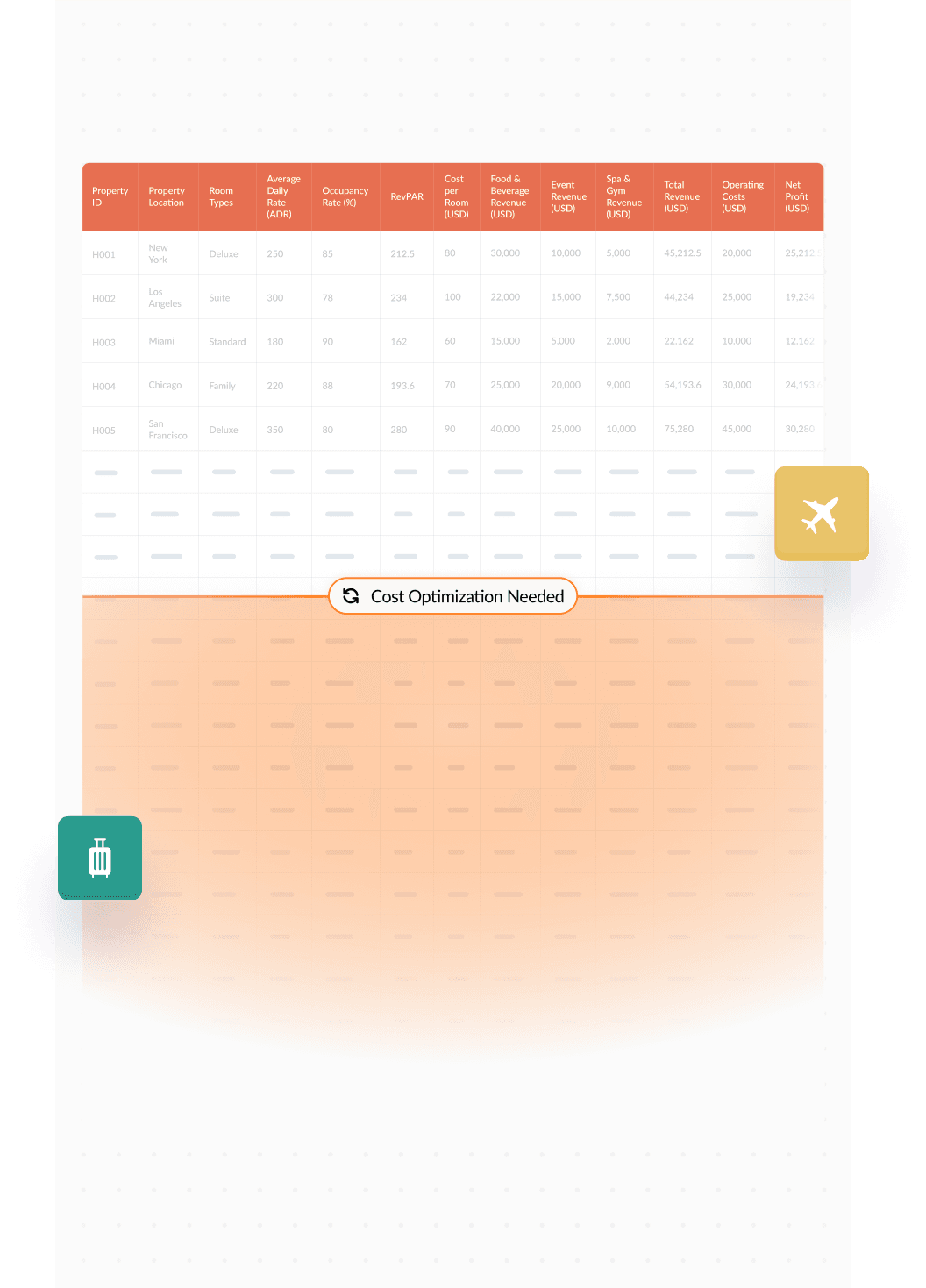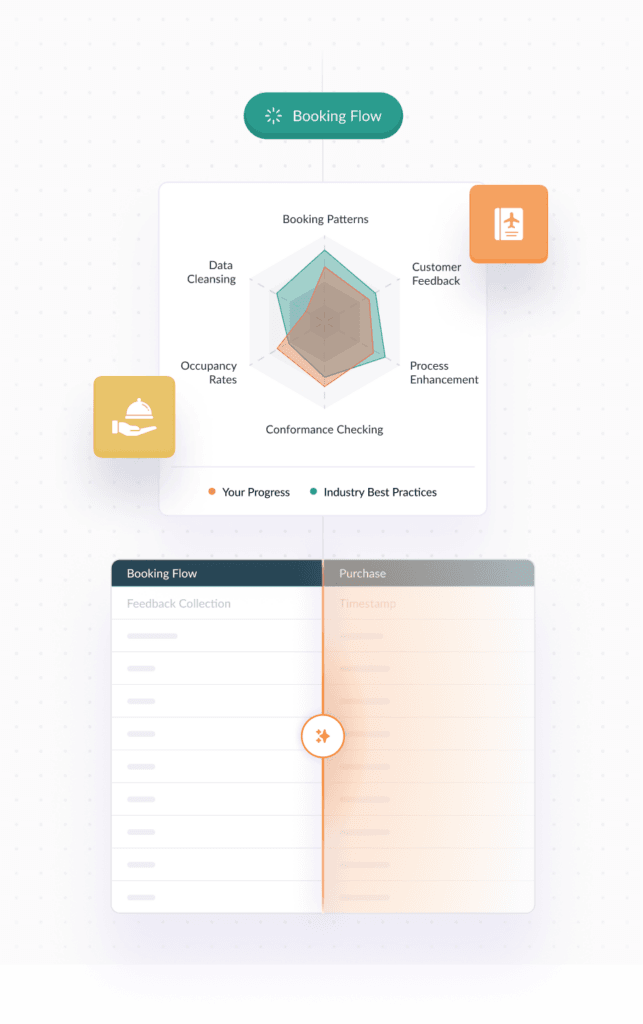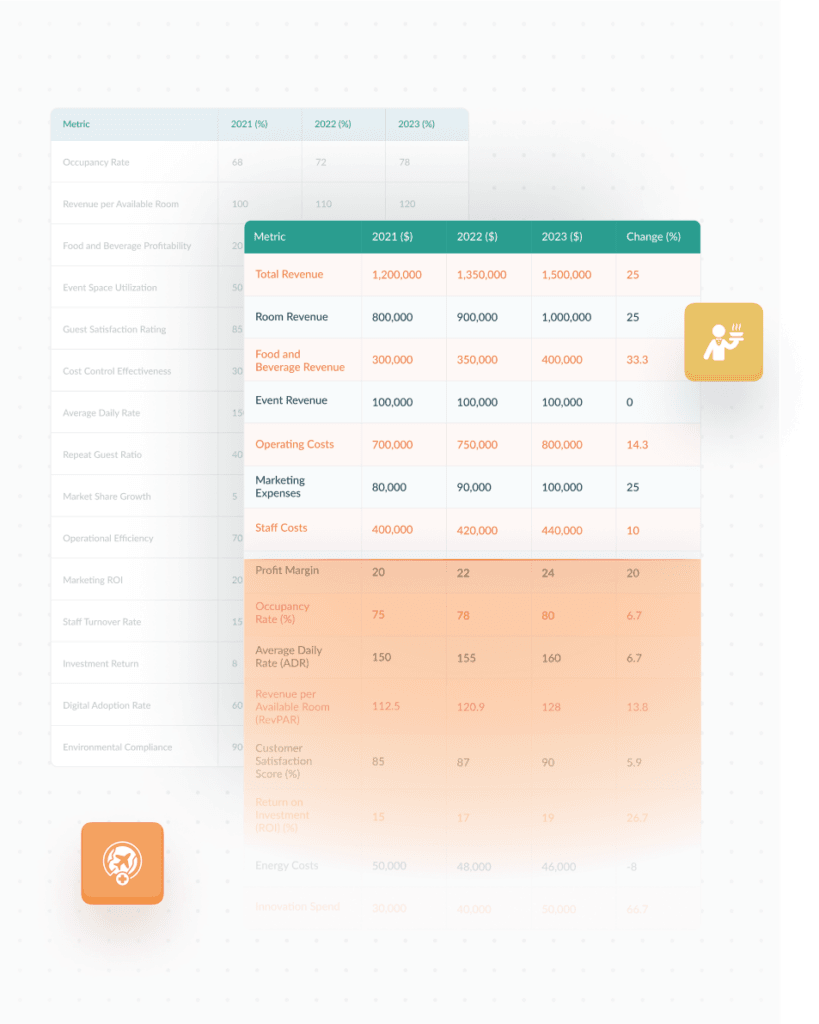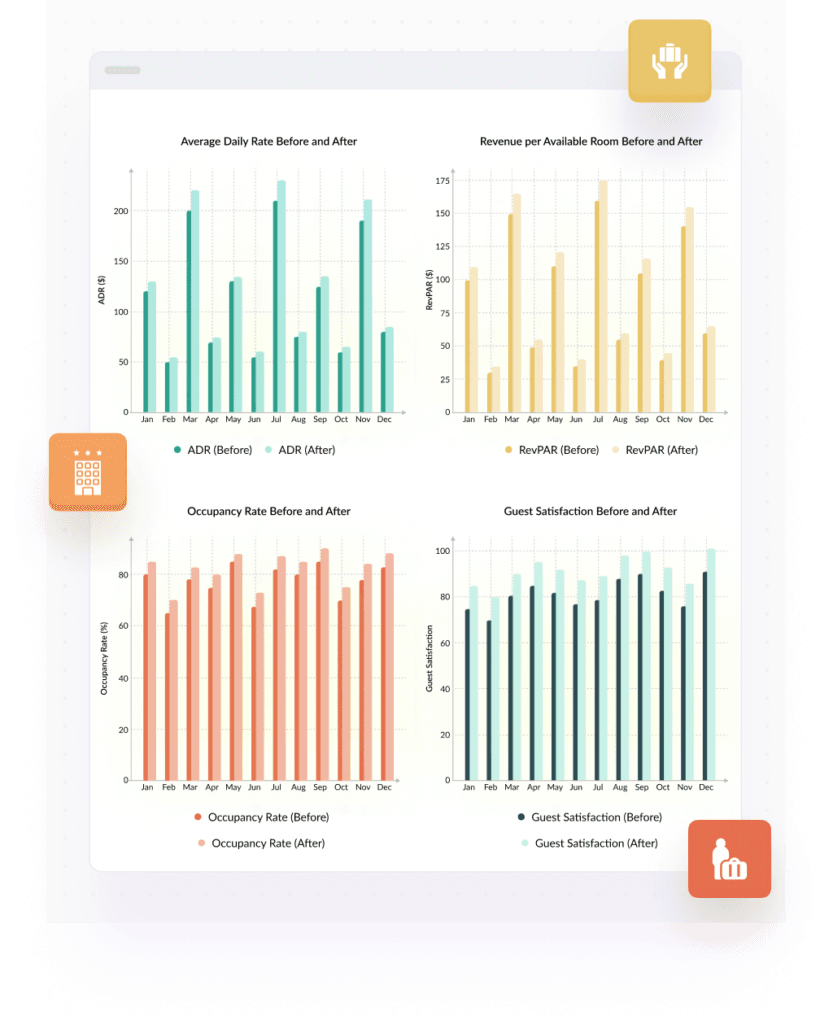Hospitality
Hotels, Restaurants, and Tourism Services

Financial & Capital Analytics
Occupancy and Revenue Management: Harness advanced analytics to optimize room pricing, balancing demand with seasonality and booking lead times. Implement predictive models to enhance revenue per available room (RevPAR) and overall occupancy rates
Food and Beverage Efficiency: Analyze cost versus revenue for restaurant and bar services within the hospitality context. Implement menu engineering and pricing strategies to maximize profitability without compromising on guest satisfaction
Event Management Financials: Examine financial health of event hosting spaces within hotels. Optimize pricing strategies for events based on historical data and future bookings, considering seasonal variations and event type
Property Performance Comparison: Compare financial performance across properties to identify high performers and underachievers. Use data to guide renovations, marketing efforts, and operational adjustments
Investment Decision Support: Utilize financial metrics and modeling to guide decisions on property acquisitions, renovations, or divestitures. Assess the return on investment for hospitality assets under varying market conditions
Service Offering Optimization: Evaluate the profitability of ancillary services such as spas, gyms, and special event spaces. Adjust offerings based on profitability analyses to optimize overall revenue streams
Guest Preferences and Behavior Analysis: Dive deep into customer data to uncover preferences and behaviors. Adjust marketing and service strategies to better align with the expectations of diverse customer segments
Competitive Benchmarking: Analyze competitors within the hospitality sector to understand pricing, occupancy, and service offerings. Utilize findings to refine strategic positioning and service delivery
Market Trend Analysis: Stay ahead of market dynamics by analyzing trends in tourism, business travel, and leisure activities. Use insights to anticipate shifts in demand and adjust operational strategies accordingly
Cash Flow Forecasting: Develop robust models to predict cash flows from operations, factoring in seasonal demand fluctuations, operational costs, and investment activities
Scenario Analysis: Employ scenario analysis to forecast financial outcomes under various operational and market conditions, helping to prepare for potential downturns or booms in the industry
Profitability Analysis: Model profitability for different segments of the hospitality business, including room rentals, food and beverage, and other services. Adjust operational tactics based on profitability insights
Capital Structure Optimization: Strategically balance debt and equity financing to fund expansions and renovations while maintaining financial health. Analyze lease versus buy decisions for property and equipment
Funding Strategies for Growth: Identify and secure financing options tailored to hospitality needs, including loans, investors, and government grants, especially for large-scale renovations or expansions
Operational Performance Tracking: Monitor key performance indicators like average daily rate (ADR) and RevPAR against forecasts. Adjust operational strategies based on identified variances
Expense Management: Keep a tight control on operational costs such as staffing, utilities, and maintenance. Identify variances from budget and adjust accordingly to maintain profitability
Market Volatility Assessment: Evaluate risks associated with economic downturns, changes in travel patterns, and other external factors. Develop strategies to mitigate impacts on occupancy and revenue
Operational Efficiency Risks: Identify risks related to operational inefficiencies and develop strategies to enhance process efficiency, reduce waste, and improve service delivery. By focusing on these specific financial aspects and challenges unique to the hospitality industry, Stemscale can empower hospitality businesses to optimize their financial performance and strategic positioning in a competitive market.
Process Mining
Collect data from booking systems, customer service interactions, and operational logs from hotels, restaurants, and tourism services
Prepare the collected data by cleansing and standardizing input from diverse sources to ensure accurate analysis of guest experiences and operational efficiency
Model the typical customer journey and operational processes to visualize and optimize the flow of service delivery from reservation to checkout
Check the conformity of actual service processes against industry standards and customer expectations to identify discrepancies and opportunities for service enhancement
Improve customer handling procedures, optimize booking processes, and enhance overall service quality based on the insights gathered


Business Intelligence
Analyze guest visit patterns, revenue per available room (RevPAR), and customer satisfaction metrics to evaluate business performance
Investigate factors leading to low occupancy rates or poor guest reviews by analyzing staff performance data, pricing strategies, and competitor actions
Forecast potential disruptions in supply chains or predicting future demand for shipping services using historical data and external factors like economic indicators
Utilize historical data on bookings and seasonal trends to forecast future demand and set dynamic pricing models
Synthesize data from guest feedback, economic indicators, and service quality assessments to deduce patterns for future business strategy adjustments
Streamlining
Analyze customer service processes from booking to check-out, including dining and housekeeping services. Identify slow points like check-in/out procedures or room service delays
Use online booking and check-in systems, digital room keys, and automated ordering systems in restaurants to minimize wait times and reduce staff workload
Implement metrics such as occupancy rates, average daily rate (ADR), customer satisfaction scores, and repeat guest ratios to evaluate performance and identify areas needing improvement
Combine similar services where feasible, such as integrating spa and fitness center management, or managing multiple dining facilities under a single operational strategy to cut costs and streamline services
Create standardized protocols for customer interactions, room cleaning, and food preparation to ensure quality and compliance with safety standards across all properties
Install feedback systems like digital kiosks, online surveys, and direct feedback channels in rooms and via apps to gather guest opinions and suggestions in real-time
Assess whether streamlining efforts have improved guest experiences, operational efficiency, and profitability. Adjust operational strategies based on these evaluations to enhance service delivery

